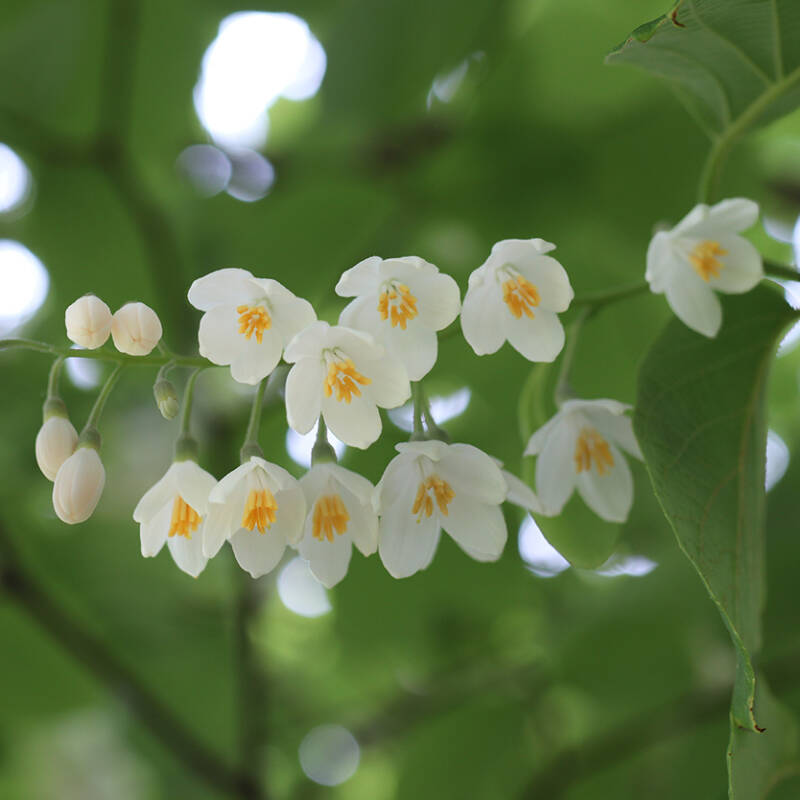Exhale. Close your eyes. Picture an early summer evening and a tangle of honeysuckle in bloom. Inhale. Hold. And exhale to the count of four. Repeat. Scent therapy. All you need is the memory of that delicious fragrance.
My memories are made in early summer, when honeysuckle is in peak bloom. I spend quiet hours collecting the tubular flowers to make a honeysuckle cordial, which is one of the best things I have ever tasted. As the delicate petals drop into a paper bag I remind myself that fewer flowers also means fewer fruits, which in turn slows down the spread of what is in fact a very invasive vine. It is just a drop in the biodiversity bucket, but what a delectable drop: Honeysuckle cordial is summer in a bottle, the flowers’ translation from one sense to the next—smell to taste—seamless and miraculous.
Read on to learn to make magic.
Photos by Marie Viljoen.

The honeysuckle flowers I collect come from scrambling feral hedges of Lonicera japonica in the forests and along the shorelines of New York City, where I live. And sometimes my mother’s Cape Town garden, if I am visiting. Beyond its native East Asian range, Japanese honeysuckle’s tenaciously twining habit is responsible for significant habitat transformation and a loss of biodiversity as it outcompetes native plants by shading them, girdling saplings and shrubs, and smothering shrubs. Ripening in autumn, its black fruits are enjoyed by birds as they migrate, and the seed is spread. As a gardener who tries to work as soundly as possible in an ecological context, I would never plant it. (An alternative is the unscented but gorgeous native North American Lonicera sempervirens, which is very attractive to pollinators and hummingbirds.)

There are two ways to make a honeysuckle cordial. The first is an aerobic fermentation where flowers, water, and sugar are combined to ferment naturally over several days or weeks. The flavor of fermented honeysuckle cordial conveys the flowers’ scent perfectly, but the process also adds unique complexity (as well as probiotics) to the cordial. The result is similar to a kombucha, but more concentrated.
The other method is to soak the flowers overnight in a simple syrup and then strain. This is quicker, the flavor less complex , but it works very well. Try both!

What is a cordial? It is a concentrated drink that is diluted before being sipped, or it would be too sweet. It’s an efficient way to make the most of several hours of flower-collection, and to extend their season in your kitchen.

Collect honeysuckle flowers when they are open (the buds will have little to no scent). You will notice that that the flowers bruise or oxidize easily, but this does not affect their scent nor the flavor it conveys. Yellow flowers are more mature and strongly scented, but white and cream flowers smell good, too.

Honeysuckle Cordial
Makes 5 cups
Naturally effervescent, this is probably the most delightful drink I know. It tastes exactly the way honeysuckle smells. You can also use fragrant roses, elderflower, violets, or wisteria flowers. To help ensure a successful ferment make sure your hands and utensils are clean. Stir daily to encourage aeration.
- 3 cups (about 3 ounces) honeysuckle flowers
- 5 cups water
- 2 cups sugar
Combine all the ingredients in a large clean jar or jug and stir until the sugar has dissolved. Cover the mouth with cheesecloth secured with string or a rubber band. Keep it out on a counter but out of direct sunlight, and stir daily. Once fermentation is very active (lots of bubbles, flowers sometimes slowly rising out of the jar), push the flowers down and keep stirring. Give it an extra day, then strain through a fine-mesh sieve, and again through a double layer of cheesecloth. Pour into clean bottles and close. Keep the bottles in the fridge, as some fermentation will continue. (A bottle can explode, left out and warm.)

After you have made honeysuckle cordial you can make a quick, infused vinegar with the leftover, strained flowers (the pomace). They have plenty of perfume left. (I call this vinegar “quick” because the long method is vinegar-from-scratch: The strained cordial is returned to its jar and left for between two weeks and several months, while lactobacter convert its sugars into lactic acid. It’s a simple process but with lots of variables.)

Quick Honeysuckle Vinegar
Makes about 2¼ cups
- 1 packed cup strained honeysuckle pomace (or fresh honeysuckle flowers)
- 2¼ cups white wine vinegar
Place the honeysuckle flowers in a clean jar. Cover with vinegar. Let steep for 2 weeks. Strain through a double-mesh sieve, again through cheesecloth, and bottle. This vinegar keeps indefinitely until opened (after which store it in the fridge).

Honeysuckle is wildly versatile. Used as a salad dressing its floral flavor works especially well with fruit in savory salads. It is also delicious added to a hot pan to where you are searing fish fillets. It’s a natural partner for roast root vegetables, and adds depth to adobo-style braises, (where soy sauce needs a tart and sweet counterbalance). And cut with chilled sparkling water, honeysuckle vinegar is a very refreshing and healthy summer drink.









Have a Question or Comment About This Post?
Join the conversation